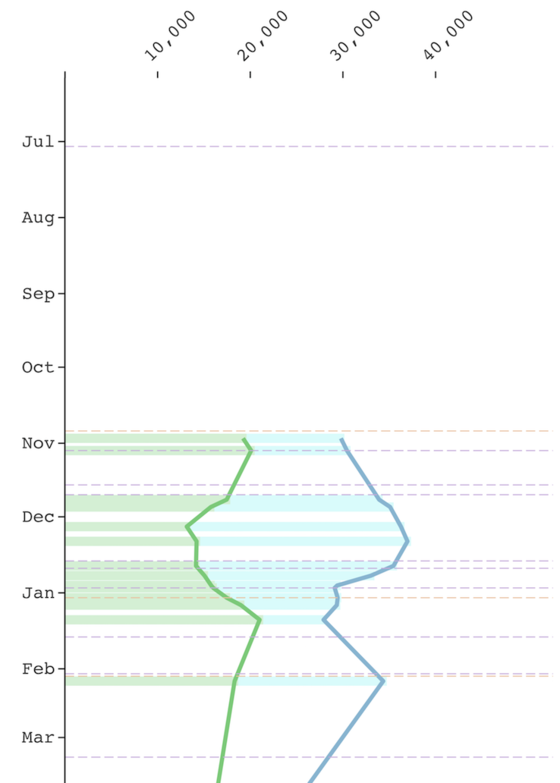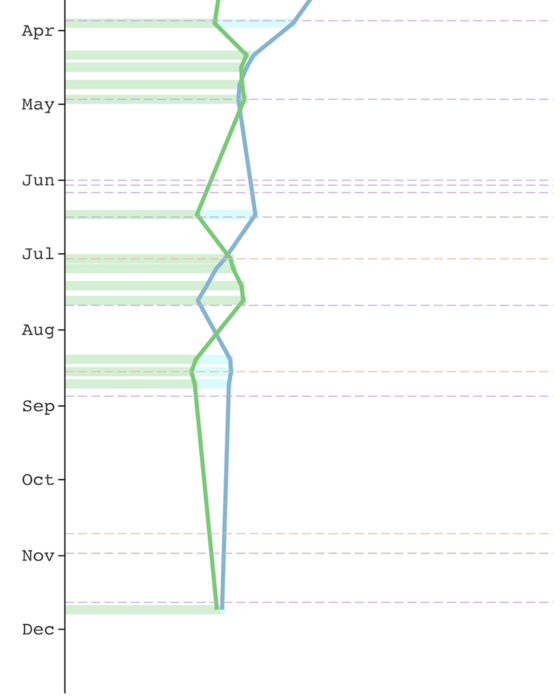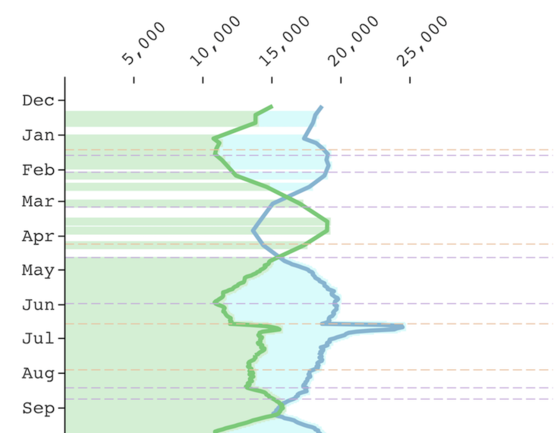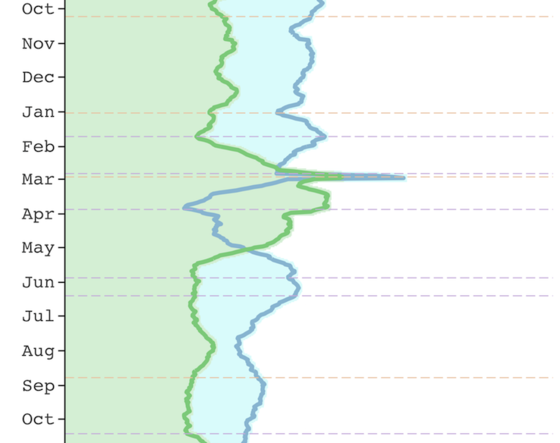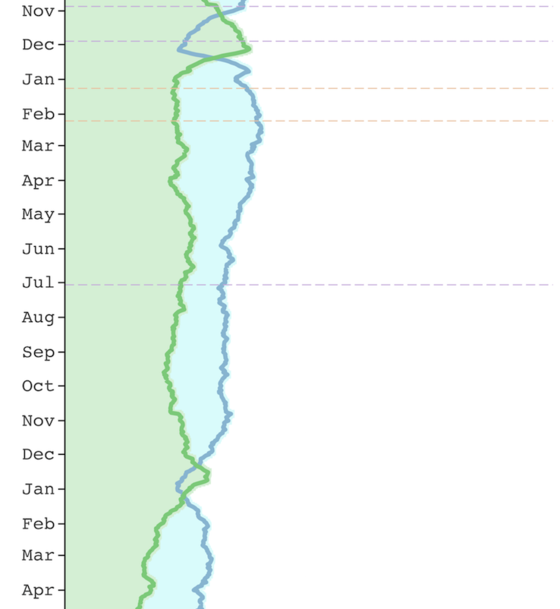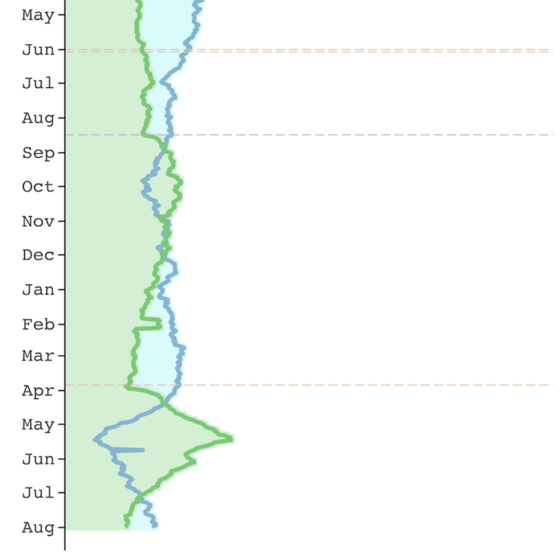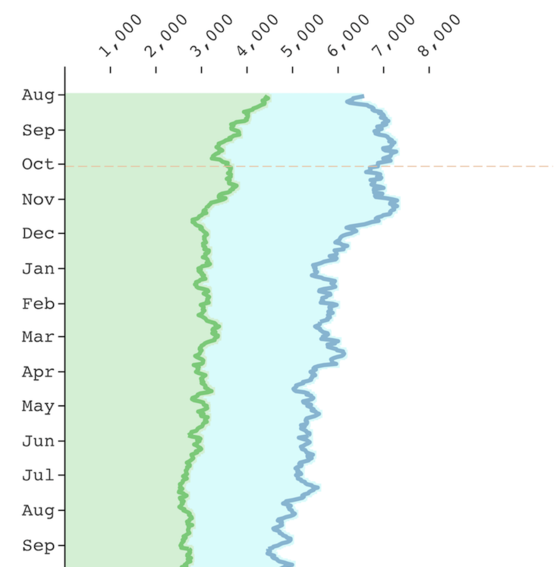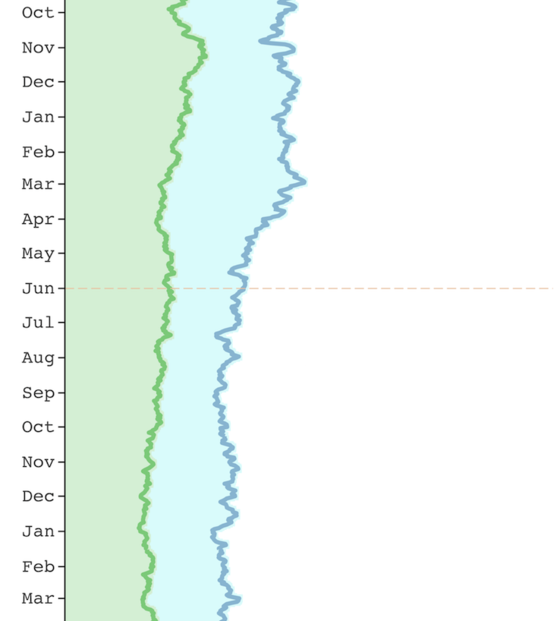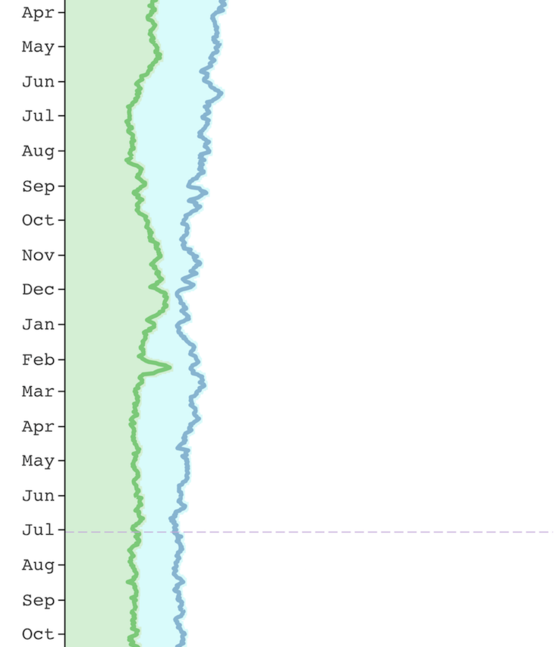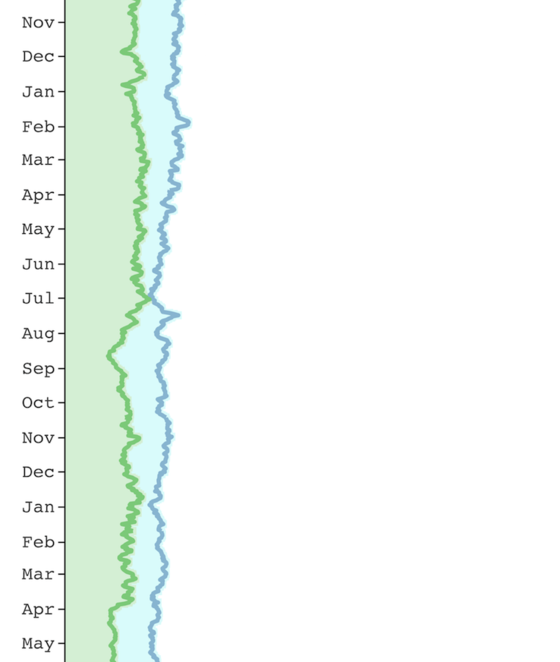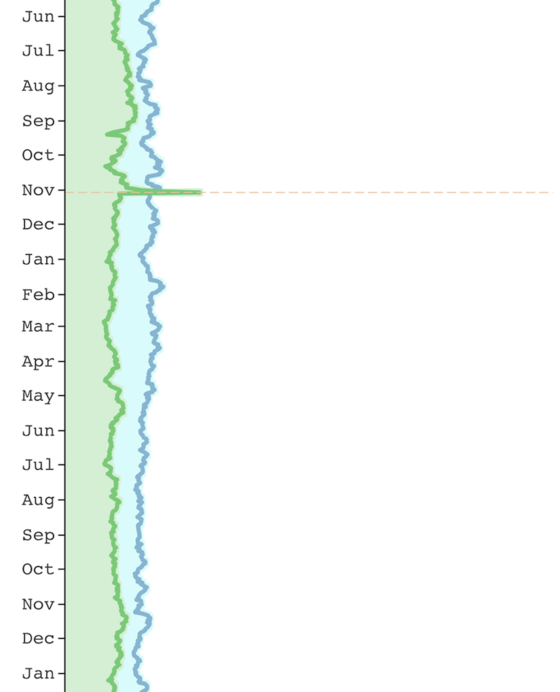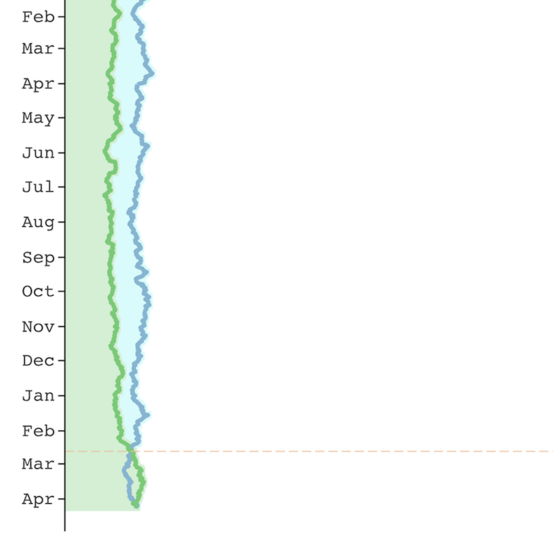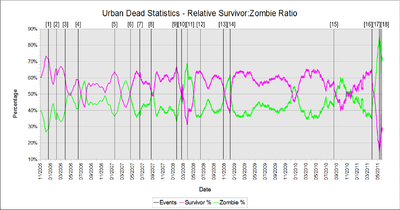Survivor-Zombie Imbalance: Difference between revisions
mNo edit summary |
mNo edit summary |
||
| Line 1: | Line 1: | ||
=====<font color=white>1</font>===== | =====<font color='white'>1</font>===== | ||
{| | {| | ||
| width="40px" style="border-right:solid 1px white;color:white" | ........... || style='padding-left:10px' | [[File:Survivor-Zombie Ratio.png]] | | width="40px" style="border-right:solid 1px white;color:white" | ........... || style='padding-left:10px' | [[File:Survivor-Zombie Ratio.png]] | ||
| Line 13: | Line 13: | ||
=====<font color=white>2</font>===== | =====<font color='white'>2</font>===== | ||
<Big><big><big>'''INTERPRETING THE GRAPHS'''</BIG></big></big> | <Big><big><big>'''INTERPRETING THE GRAPHS'''</BIG></big></big> | ||
| Line 24: | Line 24: | ||
All that said, '''the purpose of the following in-depth graph is to chronicle the game balance over the years, without pointing too many fingers.''' | All that said, '''the purpose of the following in-depth graph is to chronicle the game balance over the years, without pointing too many fingers.''' | ||
=====<font color=white>3</font>===== | =====<font color='white'>3</font>===== | ||
<big><big>CAVEATS</big></big> | <big><big>CAVEATS</big></big> | ||
{| | {| | ||
| Line 38: | Line 38: | ||
|} | |} | ||
=====<font color=white>4</font>===== | =====<font color='white'>4</font>===== | ||
<big><big>WHY ISN'T [INSERT EVENT HERE] ON THE GRAPH?</big></big> | <big><big>WHY ISN'T [INSERT EVENT HERE] ON THE GRAPH?</big></big> | ||
| Line 49: | Line 49: | ||
=====<font color=white>5</font>===== | =====<font color='white'>5</font>===== | ||
<BIG><BIG><BIG>'''EARLY DAY VOLATILITY'''</BIG></BIG></BIG><br><big>Plot of <font color='#98c1d9'>'''Survivor'''</font> and <font color='#8bd08b'>'''Zombie'''</font> populations. <br>2005 to 2006.</big> | <BIG><BIG><BIG>'''EARLY DAY VOLATILITY'''</BIG></BIG></BIG><br><big>Plot of <font color='#98c1d9'>'''Survivor'''</font> and <font color='#8bd08b'>'''Zombie'''</font> populations. <br>2005 to 2006.</big> | ||
| Line 138: | Line 138: | ||
|- | |- | ||
| | | | ||
=====<font color=white>6</font>===== | =====<font color='white'>6</font>===== | ||
<br><BIG><BIG><BIG>'''THE SWINGS'''</BIG></BIG></BIG><br><big>Plot of <font color='#98c1d9'>'''Survivor'''</font> and <font color='#8bd08b'>'''Zombie'''</font> populations. <br>2007 to Mid 2011.</big> | <br><BIG><BIG><BIG>'''THE SWINGS'''</BIG></BIG></BIG><br><big>Plot of <font color='#98c1d9'>'''Survivor'''</font> and <font color='#8bd08b'>'''Zombie'''</font> populations. <br>2007 to Mid 2011.</big> | ||
| Line 251: | Line 251: | ||
|- | |- | ||
| | | | ||
=====<font color=white>7</font>===== | =====<font color='white'>7</font>===== | ||
<br><BIG><BIG><BIG>'''THE LONG TAIL'''</BIG></BIG></BIG><br><big>Plot of <font color='#98c1d9'>'''Survivor'''</font> and <font color='#8bd08b'>'''Zombie'''</font> populations. <br>Mid 2011 to 2020.</big> | <br><BIG><BIG><BIG>'''THE LONG TAIL'''</BIG></BIG></BIG><br><big>Plot of <font color='#98c1d9'>'''Survivor'''</font> and <font color='#8bd08b'>'''Zombie'''</font> populations. <br>Mid 2011 to 2020.</big> | ||
| Line 304: | Line 304: | ||
=== '''2013'''=== | === '''2013'''=== | ||
<font color='white'>.</font> | |||
{| style='padding-top: | {| style='padding-top:120px' | ||
|'''June 1st.''' [[Big Bash 4|The Big Bash 4]], the last bash and the last player event on this graph. This Bash is gravely concerned for survivor safety; survivors, who for a moment believe the zombies have their best interests in mind, quickly realize the zombies feel they are ''too'' safe. In other words, many zombies eat many survivors. | |'''June 1st.''' [[Big Bash 4|The Big Bash 4]], the last bash and the last player event on this graph. This Bash is gravely concerned for survivor safety; survivors, who for a moment believe the zombies have their best interests in mind, quickly realize the zombies feel they are ''too'' safe. In other words, many zombies eat many survivors. | ||
|} | |} | ||
| Line 352: | Line 352: | ||
=== '''2015'''=== | === '''2015'''=== | ||
<font color='white'>1</font> | |||
{| style='padding-top: | {| style='padding-top:150px' | ||
|'''July 3rd.''' On Urban Dead's birthday, [[User:Kevan|Kevan]] opens up [http://www.urbandead.com/survey.cgi the State of the Apocalypse Survey]. The survey asked what suggestions you would add, the flavour and gameplay changes you are interested in, and what you like best and least. The results were never officially released, nor leaked surreptitiously. Kevan never appeared to act on the results, so far as anyone can tell. | |'''July 3rd.''' On Urban Dead's birthday, [[User:Kevan|Kevan]] opens up [http://www.urbandead.com/survey.cgi the State of the Apocalypse Survey]. The survey asked what suggestions you would add, the flavour and gameplay changes you are interested in, and what you like best and least. The results were never officially released, nor leaked surreptitiously. Kevan never appeared to act on the results, so far as anyone can tell. | ||
|} | |} | ||
| Line 397: | Line 397: | ||
=== '''2017'''=== | === '''2017'''=== | ||
{| style='padding-top: | <font color='white'>1</font> | ||
{| style='padding-top:303px' | |||
|'''November 3rd.''' Mass [[zerging]]. It is so obvious that it can be seen from space (i.e., this graph). Zombie numbers spike roughly 1,300 over two days, then plummet on the third. Levels of normal and revivifying bodies remain untouched, as do survivors, suggesting the zombies were banned en masse. | |'''November 3rd.''' Mass [[zerging]]. It is so obvious that it can be seen from space (i.e., this graph). Zombie numbers spike roughly 1,300 over two days, then plummet on the third. Levels of normal and revivifying bodies remain untouched, as do survivors, suggesting the zombies were banned en masse. | ||
|} | |} | ||
| Line 466: | Line 467: | ||
|} | |} | ||
=====<font color=white>8</font>===== | =====<font color='white'>8</font>===== | ||
<Big><big><big>'''CONCLUSION'''</BIG></big></big> | <Big><big><big>'''CONCLUSION'''</BIG></big></big> | ||
Revision as of 15:24, 23 June 2020
1
| ........... | 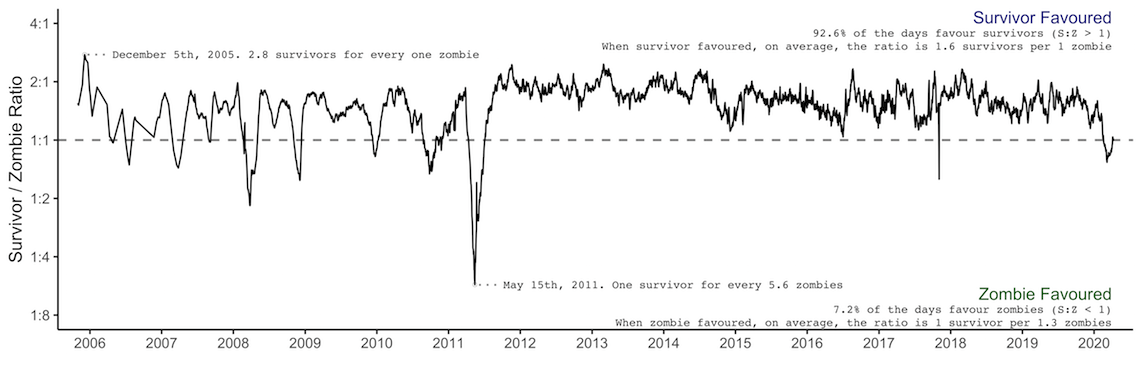
The Survivor / Zombie Ratio, December 2005 to April 2020. Data obtained from Urban Dead statistics, April 2017 to current day. Older data from the Wayback Machine was collected manually.3
2INTERPRETING THE GRAPHS The first graph shows the survivor-zombie ratio. The graph below shows the absolute survivor and zombie populations in a series of three parts: Early Day Volatility (EDV), The Swings (TW), and The Long Tail (TLT).4 These graphs go in-depth, listing most game updates and a small number of player-initiated events. While the game updates are listed regardless of their impact on the survivor-zombie ratio, partly due to the relative infrequency of the updates, the player events are (usually) listed if they seem to be responsible for a shift in the survivor-zombie ratio. An underlying assumption is that the ratio only changes if a force acts on it, be it a game update or player event. Although it often seems "obvious" that a game update or player event caused a shift in the ratio, it is impossible to identify all player events occurring at a given time; not all have been written into history. And given a specific time point, multiple events could be happening at the same time. How do we determine the degree to which each event influenced the ratio? Sometimes, however, an event is so large that it undeniably caused a change in the ratio. Call it a natural experiment. All that said, the purpose of the following in-depth graph is to chronicle the game balance over the years, without pointing too many fingers. 3CAVEATS
4WHY ISN'T [INSERT EVENT HERE] ON THE GRAPH? The graph maker may have missed an important game event (and it should be included). But it's also important to minimize the number of events and game updates on the page, as there's only so much room available. Larger scale events, such as roaming hordes and "big picture" moments in history (e.g., protests) are typically included. While some events clearly had no impact on the ratio, such as The Big Bash 4, they are still listed here. This is mainly included for the reader's interest, since the earlier versions of events tended to have a stronger impact. A few second city events are included for interest, even though their respective populations are not present in Malton's statistics. Some of the simpler or cosmetic game updates are also not mentioned, such as bug fixes, server upgrades, and unofficial changes (example).
5EARLY DAY VOLATILITY The first year or so of Urban Dead's history was marked by rapid game updates, establishing fundamental mechanics that flattened the ratio close to equality. These changes came quickly on the heels of social upheaval, the kind consisting of protests, violent riots, and roaming zombie hordes. It was an energetic, though uncertain time.
8CONCLUSION The ratio stabilized as time went on. By The Long Tail, there were three survivors for every two zombies. (To be precise, it's an average of 1.55 survivors per zombie over the entire game history.) Is this a sign of game imbalance? Of course, "it depends." What things should look like is an opinion (pick one, none, or more):
The opinion of this author: the ratio favours survivors because they have more things to do and are more fun to play. The AP efficiency of actions is secondary to this. The fact that players choose the side they want to play damages the idea that AP efficiency is the cause for the relative overabundance of survivors... with the exception of the few and far between Dual Nature players. Consider game equilibrium. Whenever a survivor is killed, they become zombies until they are revived. The rate at which survivors go through this process depends on how much AP it takes to kill them, to find syringes, find survivors to revive, and then revive them. But the game balance cannot be reduced to the math of AP efficiency. If dead survivors want to be alive, they go to revive points, get revived, and try not to die again. This increases the rate at which survivors are revived, but it is based on player preference rather than the direct cost of AP. To drive the point home, if every player suddenly decides they only want to be zombies, then they purchase brain rot or jump out of buildings. This would greatly slow the rate at which zombies become survivors, increasing the relative abundance of zombies. If we really wanted to know how balanced the game is from an AP efficiency perspective, everyone would need to play as Dual Nature.
OLDER GRAPHS
SEE ALSO
|
